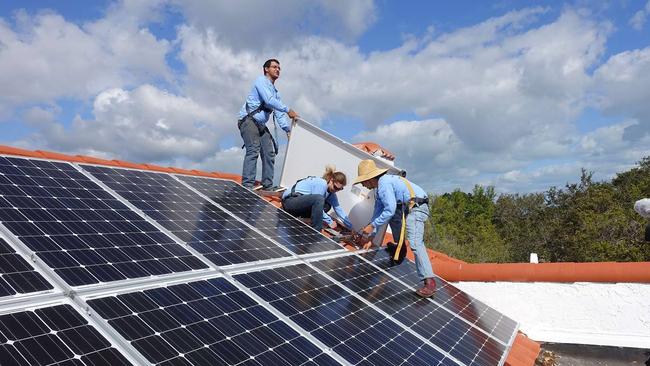Property industry to drive disruption in energy market

It is a time of uncertainty and opportunity for industry players across electricity, water, gas, hydrogen, batteries, transportation and real estate as they find their place in this new world of energy supply.
It is not surprising then that convergence — where industry boundaries blur and competition comes from outside the traditional spheres of business — has become the new basis for investment in adjacent sectors. Just as the airlines have cracked the credit card space, hotel operators have merged into healthcare, and technology companies have shaken up just about every sector, the property industry is well positioned to drive disruption in the energy market.
Finding opportunities in the National Energy Market demands a clear-eyed assessment of three uncertainties. At what point will renewables contribute half the energy in the national grid? What degree of backlash can we expect from customers and governments as prices continue to rise in an increasingly volatile market? And will government offer capacity payments or underwrite the system to ensure reliability and deal with the faltering levels of inertia created by renewables?
These three uncertainties give rise to numerous future scenarios — the most likely being a market with high levels of renewables and high levels of government intervention in the areas of capacity and customer empowerment. Importantly, these scenarios are positive for microgrids, demand-side management, and decentralisation of supply — a point not lost on the investors and leaders of the property industry.
Last year alone, Stockland invested $23.5 million in rooftop solar at 10 retail centres around the country. The largest rooftop solar project ever undertaken by a landlord in Australia, the project has delivered more than 39,000 photovoltaics — around the size of nine rugby fields — that will trim retailers’ energy baseload by about a quarter. Lendlease, through its Living Utilities business, has a stack of projects under way, including a solar farm on the rooftops of Melbourne Quarter, a battery storage trial at Alkimos Beach in Perth and a 200MW solar farm under construction in Texas.
Australia’s largest office landlord, Dexus, has partnered with Red Energy, 100 per cent-owned by Snowy Hydro, on a seven-year energy supply deal. This will insulate Dexus from energy market uncertainty, cut carbon emissions and allow it to pass a 10 per cent energy saving on to customers.
Mirvac has also created a living laboratory in Melbourne, with its House with No Bills project testing a host of technologies as it looks to create “self-sustaining” masterplanned communities.
And Frasers Property Australia has established a stand-alone business, Real Utilities, to offer its customers certified carbon-neutral power more cheaply than they could source themselves. This is on top of Frasers’ investments in geothermal and solar that have become hallmarks of its projects.
The battle for the customer has also shifted to the home. Retailers are now competing not only with conventional entrants such as oil and gas companies, but with technology platforms and automotive companies. It is therefore somewhat inevitable that property would begin to elbow its way in.
The barriers that once prevented property players from entering the energy arena are being broken down by technologies like blockchain, battery storage, and Internet of Things (IoT) devices — which enable consumers and corporate customers to monitor energy usage, such as smartphone app ZOME.
The combined power of blockchain and cryptocurrency means energy rates need no longer be determined by centralised authorities, but instead can be adjusted according to supply and demand. Australian start-up Power Ledger allows consumers to buy and sell renewable energy directly between one another using a blockchain platform.
These adaptive models illustrate an innovative industry that is not only serious about sustainability, but also leveraging the opportunities created through 15 years of poor energy policy in Australia.
The energy sector is at the earliest stage of technology-driven disruption. The one-size-fits-all approach of the past — of wires and wooden poles — no longer works in an era of interconnection, hyper-urbanisation, and climate change. Given that the property sector has dominated the upper echelons of the Global Real Estate Sustainability Benchmark for nearly a decade, it has earned a seat at the table in the clean-energy business.
Property leaders are aware of Australia’s finite carbon budget. They understand that every year of inaction now makes the task harder and costlier for everyone. Low Carbon, High Performance, published by the Australian Sustainable Built Environment Council, found that just five years of delay in reducing building emissions could lead to $24 billion in wasted energy costs.
Selina Short is real estate and construction leader at EY, and Matt Rennie is power and utilities leader at EY.



The convergence of energy generation and consumption is here. And not a moment too soon.